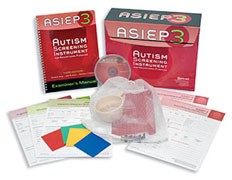Autism Screening Instrument for Educational Planning (ASIEP-3)
Complete Kit
- Ages 2-0 through 13-11 years
- Testing Time Varies
- Administration Individual
-
Product Code 12740 ( MR #049480 )
* Qualifications required to purchase this item. Click here to complete the qualifications form.
Price $353.00
Contents
-
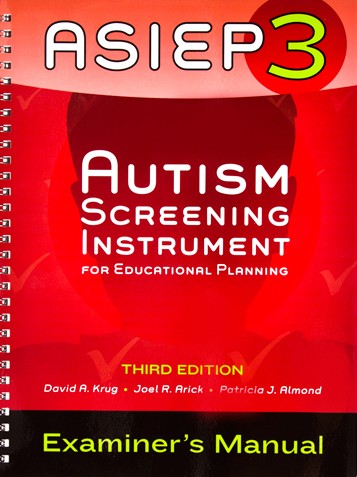
Autism Screening Instrument for Educational Planning (ASIEP-3)
ASIEP-3 Examiner's Manual
$90.00 -
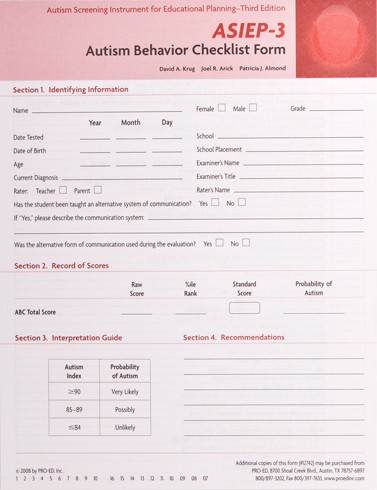
Autism Screening Instrument for Educational Planning (ASIEP-3)
ASIEP-3 Autism Behavior Checklist Forms (25)
$38.00 -
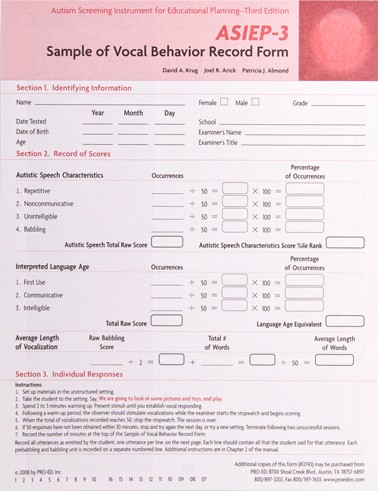
Autism Screening Instrument for Educational Planning (ASIEP-3)
ASIEP-3 Sample of Vocal Behavior Record Forms (25)
$38.00 -
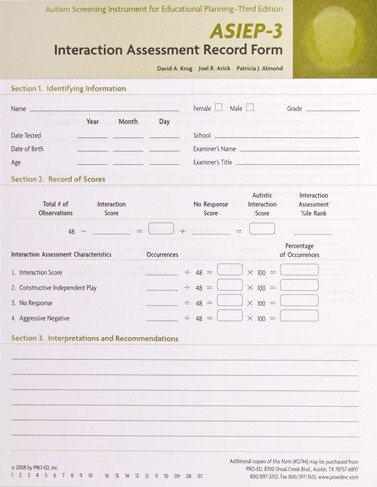
Autism Screening Instrument for Educational Planning (ASIEP-3)
ASIEP-3 Interaction Assessment Record Forms (25)
$38.00 -
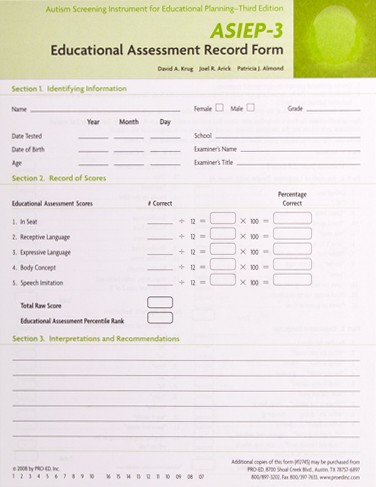
Autism Screening Instrument for Educational Planning (ASIEP-3)
ASIEP-3 Educational Assessment Record Forms (25)
$38.00 -
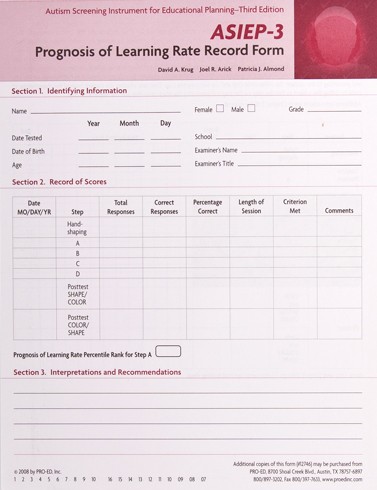
Autism Screening Instrument for Educational Planning (ASIEP-3)
ASIEP-3 Prognosis of Learning Rate Record Forms (25)
$38.00 -

Autism Screening Instrument for Educational Planning (ASIEP-3)
ASIEP-3 Audio CD
$29.00 -

Autism Screening Instrument for Educational Planning (ASIEP-3)
ASIEP-3 Toys / Manipulatives
*Not available separately (package component only)
- Autism Behavior Checklist — provides a checklist of 47 behaviors typical of autistic individuals for use during the initial screening process
- Sample of Vocal Behavior — measures four characteristics of the spontaneous speech of children with autism (i.e., repetitiveness, noncommunication, intelligibility, and babbling)
- Interaction Assessment — measures a child’s spontaneous social responses and reactions to requests
- Educational Assessment — measures a child’s functioning levels in five areas (i.e., stay in seat, receptive language, expressive language, body concept, and speech imitation)
- Prognosis of Learning Rate — examines a child’s learning acquisition rate, using a discrete trial-direct instruction format
- All new normative data were collected from a demographic representative sample of the U.S. population.
- Standard scores and percentile ranks are now provided for ages 2-0 to 13-11.
- All record forms have been reconfigured into a standard format.
- More item analysis.
- More reliability studies.
- More validity studies have been conducted.
-

Autism Screening Instrument for Educational Planning (ASIEP-3)
ASIEP-3 Audio CD
$29.00 -

Autism Screening Instrument for Educational Planning (ASIEP-3)
ASIEP-3 Autism Behavior Checklist Forms (25)
$38.00 -

Autism Screening Instrument for Educational Planning (ASIEP-3)
ASIEP-3 Educational Assessment Record Forms (25)
$38.00 -

Autism Screening Instrument for Educational Planning (ASIEP-3)
ASIEP-3 Examiner's Manual
$90.00 -

Autism Screening Instrument for Educational Planning (ASIEP-3)
ASIEP-3 Interaction Assessment Record Forms (25)
$38.00 -

Autism Screening Instrument for Educational Planning (ASIEP-3)
ASIEP-3 Prognosis of Learning Rate Record Forms (25)
$38.00 -

Autism Screening Instrument for Educational Planning (ASIEP-3)
ASIEP-3 Sample of Vocal Behavior Record Forms (25)
$38.00
- Copyright 2008

 Proud to be Canadian
Proud to be Canadian